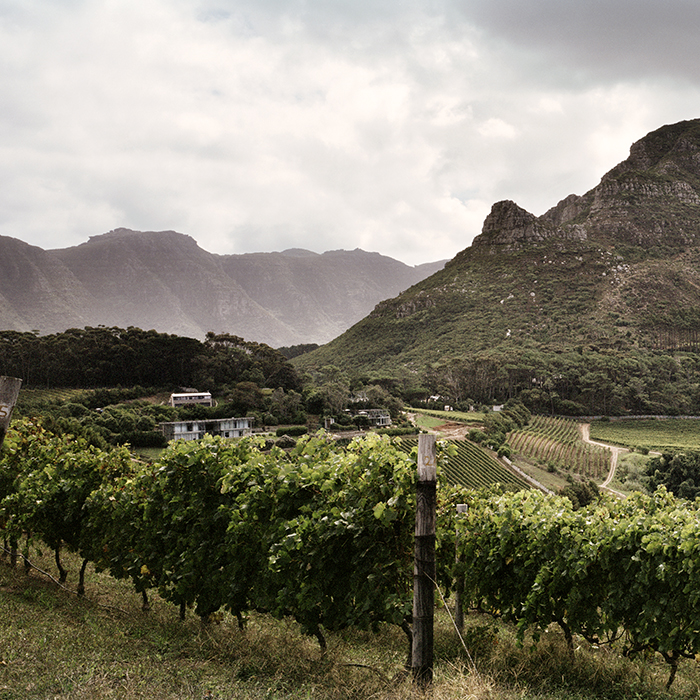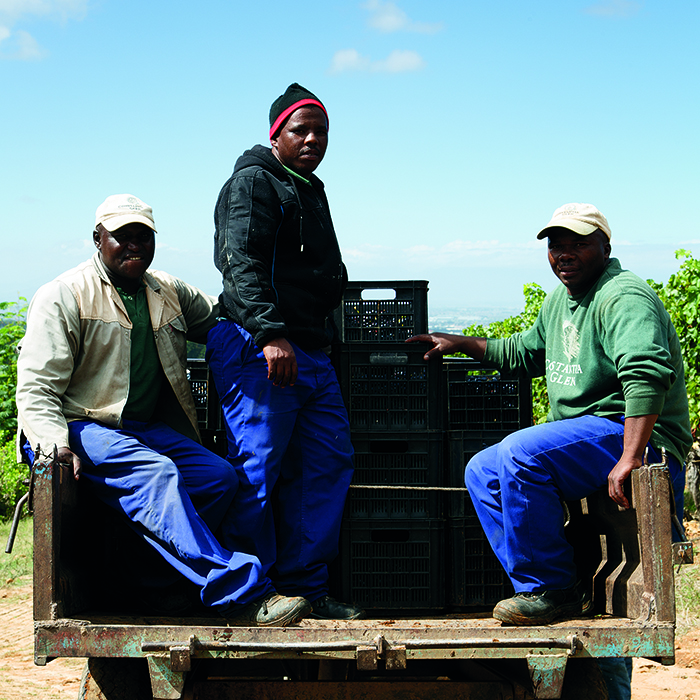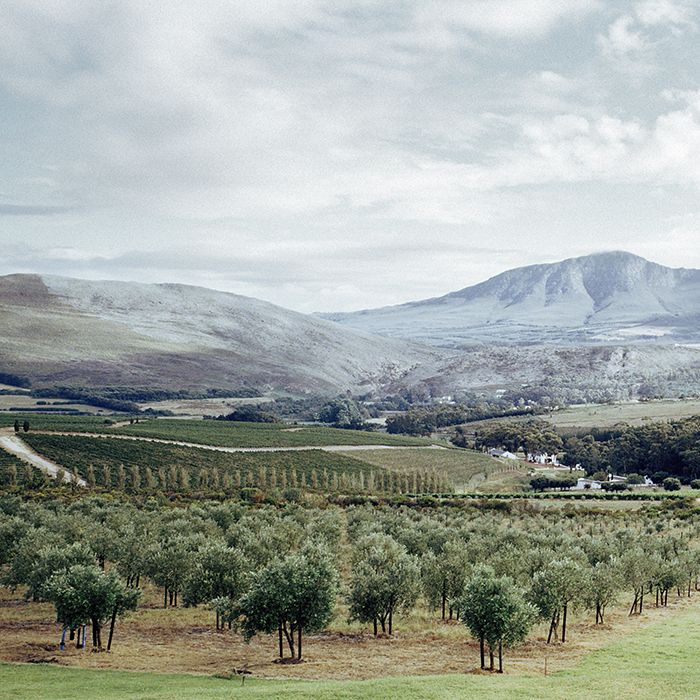South Africa: changing tides
Author: Sophie Thorpe

The Cape’s “New Wave” movement has been gaining pace, attracting the praise of critics and consumers around the world. Sophie Thorpe traces the country’s evolution and talks to some of the producers at the forefront of South Africa’s wine scene.
“If a vineyard’s got a good view, it’s probably going to make good wine,” winemaker Alex Starey says, looking out across the Blaauwklippen Valley. The scene is gestures to is a rolling patchwork of sites that he uses to magnificent effect in his Keermont wines.
There are few corners of the Cape that don’t offer extraordinary panoramas, and South Africa’s New Wave winemakers are wasting no time in exploiting these sites’ vinous potential. However, the route thus far has been a little like the ramshackle roads leading to the region’s wineries – winding, putted, but well worth the bumpy ride.
THE OLD “NEW WORLD”
Like so many of the countries rather condescendingly dubbed “the New World”, South Africa is anything but “new” – even to British drinkers. Jan van Ribeeck wrote on 6th April, 1652 (46 years before the Widow Bourne had even stepped foot in St James’s): “Today, praise be to God, wine was pressed for the first time from Cape grapes.”
Over the next century, South Africa developed a reputation thanks to the sweet wines of Constantia. They worked their way into western society, becoming some of the most highly valued bottles of their day. Napoleon placed orders for Constantia from exile on St Helena, and in Sense and Sensibility, Mrs Jennings suggests a drop for “its healing powers on a disappointed heart”.
The late 19th century brought an end to the preferential taxation for colonial exports (1861), phylloxera’s destruction (’86) and in the latter’s wake, a massive glut of low-quality wine. It was the wine lake of the early 20th century that prompted the creation of the KWV (Koöperatieve Wijnbouwers Vereniging van Suid-Afrika), the national co-operative.
While intended to offer salvation to South Africa’s struggling industry, its far-reaching power was damaging. Until 1992, the KWV set production quotas, fixed prices and decided where wine could be made. In short, it encouraged quantity over quality, hampering producers’ experimentation, innovation and progression.
But, heralding the country’s first democratic elections, ’94 was pivotal – for the nation as a whole, and its wine industry. Long isolated due to its politics, South Africa’s wine industry suddenly saw an export boom. At home, wine started to become the choice of the middle classes. Finally, with popularity in both domestic and foreign markets – the industry had the impetus to focus on quality wine production.
THE NEXT GENERATION
Today, South Africa is a country coming of vinous age, as the New Wave movement sweeps the nation onto the fine wine map. A fresh wave of worldly-wise producers is seeking out cooler sites, pushing viticulture to its limits with an eye on sustainability. They’re also experimenting with different varieties, and forgoing high yields for old vines and better fruit.
There is one man who seems to embody the new South Africa: Eben Sadie. A man described by fellow Swartland pioneer Adi Badenhorst as “baby Jesus”, this prophetic figure has been at the forefront of South Africa’s revolution. The Sadie Family Wines’ iconic Columella made waves when it was first released, 16 years ago – one of the wines that sealed the Swartland’s place in the Cape’s repertoire.
This remote, arid region had cheap land and an extraordinary wealth of old vines – mainly Chenin Blanc and red Rhône varietals. A spirited group of growers (formalised as the Swartland Independent Producers) rapidly made a name for themselves, surprising the world with elegant styles produced in an area known for its heat.

Chris and Andrea Mullineux had been working at Tulbagh Mountain Vineyards (now known as Fable Mountain), where the vines were too young to produce fruit. Instead, they bought grapes in from growers around the Cape. “Year after year the wines that we made from Swartland fruit were the most exciting for us and we started to focus on the region,” Chris says.
They made the move to set up on their own in 2007, the same year that Adi Badenhorst arrived. “We loved the raw primal power of the landscape. It is a tough place to live and farm, and doesn’t allow for airs and graces, so the people are special. Likewise with the vines too. Grape varieties that can take the dry tough conditions express themselves in a beautiful and unique way.” Chris feels the region has a signature purity and textural intensity, which – in the right hands – can be combined with remarkable freshness.
Richard Kershaw MW ended up in Elgin for a similar reason. The Englishman had been working at Mulderbosch (where Andrea Mullineux also worked) and Kanu in Stellenbosch. However, “the grapes coming into the cellar that intrigued me most were those from the Elgin Valley,” Richard tells me. “I vowed then to move to Elgin to start my own brand.” He made the move in ’12, focusing on Chardonnay and Syrah.
While the Swartland provides blistering heat, Elgin is better known for its apples – which fetch more than four times the price of its grapes, making it challenging for winemakers like Richard to source fruit. Richard feels, however, that “as the coolest wine region in the Western Cape, it affords the opportunity for the grapes to really show a sense of place.” The landscape is dramatically different – in lieu of grand stretches of straw-shaded slopes, Elgin offers a quilt of lush greenery and orchards that could pass for Kent.
Richard is passionate about driving the concept of regionality – as South African wine is still broadly focused, and sold, on style over soil. Last year he launched his Deconstructed range, offering a taste of a specific clone of one variety, grown on one site. Produced in tiny quantities, these incredible bottlings are for serious and geeky wine lovers – as would be appropriate in the hands of “Rickipedia”, as Kershaw is known.
REINVENTING THE ICONIC
The revolution has now spread beyond the Swartland and Elgin outposts, rippling into more famous regions. Stellenbosch and Franschhoek are the traditional home of quality dry wines in South Africa, housing many of the country’s leading wine estates and producing its most historically renowned bottles. Meerlust, Rustenberg and the legendary Pinotage producer Kanonkop call these regions home. But today, the energy that has pioneered viticulture in the Swartland and Elgin is invigorating Stellenbosch.
Mick and Jeanine Craven – the Australian-South African team behind the eponymous brand – are just one couple shaking things up. “Stellenbosch was a no-brainer. Jeanine – having grown up here, watching her dad farm grapes, it made her passionate about the region,” Mick tells me. They were drawn not only by the region’s beauty but its diversity.
“On one side you have coastal vineyards in sand and granite. Then, not more than 30km away, you can be on a mountain slope in dark, red clay soils. It makes it very exciting to look around for different areas, not only for grapes that are planted, but for new potential sites to be planted and explored.” Their fresh, natural bottlings of Clairette Blanche, Pinot Gris, Pinot Noir and Syrah are a far cry from the bolder reds that made the region’s name.
And they’re not alone. Mullineux has installed its new winery in Franschhoek. “We were very fortunate to be a part of the Swartland Revolution, but, over the last few years, there is a much larger revolution happening in the Cape,” Chris Mullineux says. While the majority of their wines continue to exclusively use Swartland fruit, they have introduced the Leeu Passant range – “an opportunity for us to produce wines from very special vineyards all over the Cape, some really old, and some in very special sites,” Chris explains.

No matter where you look, there’s an “amazing energy in the industry at the moment,” Mick Craven opines. This contagious dynamism is tangible in the wines being produced. This, combined with – as Mick describes it – an “old-vine treasure chest” makes for an exciting future, with almost endless possibilities for the no-longer nascent industry.
There are, however, threats to its success. Low-yielding old vines risk being pulled out as growers seek higher prices and larger crops. Disease is all too rife in vineyards; leafroll, fanleaf and corky bark virus all present problems for the nation’s winemakers. Global warming looms on the horizon, dauntingly apparent as the country experiences its worst drought in over a century. “We are already in the third year, with dam levels at all-time lows, and many farms depending on irrigation,” Constantia Glen’s Alexander Waibel explains.
“We also have big social issues, where there is still a lot of poverty, unemployment and poor education in the country,” Chris Mullineux states. Apartheid remains recent history and its effects are still felt. The Cape Winemakers’ Guild is just one association nurturing equality, encouraging black talent into wineries via its apprenticeship scheme.
The New Wave is also aware they won’t be “new” for long. “We cannot rest,” says Mick Craven on the challenge to stay relevant. The potential has been exposed, though, and the industry’s unique camaraderie – an openness to share and collaborate – promises great things. “We are working together to forge a path for South African wine. We are also discovering and learning to be proud of our own terroir, and more are striving to make authentically South African wines.”
This drive to produce wines that are true to the Cape is a common thread. “I have a responsibility to make – in my lifetime – a wine that resonates this place, and not a watered-down ideology of French wine,” Eben tells me, but what’s next? “I want to get better, and not better by the judgement of the critics. By our definition: better for the people that work with us, better for our employees, better for the soils, better for the plants, better for the socio-economics. It’s not just vineyards: it’s this whole community.”
Discover our complete South Africa offer here.



Great post. Be good to have a map/link to a map of the areas/regions and wineries mentioned. I’m going on my first trip in January and would love to visit!
Dear Philip,
Glad you enjoyed it. Apologies for the lack of a map, I’m afraid we don’t currently have one, but crossed fingers Google maps should provide a good guide! Enjoy your trip in January – it’s an extraordinary place to visit.
Best wishes,
Sophie
Dear Philip,
Great to hear that you are heading to South Africa in January. You will find lots of maps (including regional maps) on our website here: http://www.wosa.co.za/Multimedia/Maps-Links/
Have a fantastic trip and do let us know if you need more info (info at winesofsa dot com).
All the best,
Claudia
Great to see the youngsters being noticed and South Africa being “discovered” but we will need more than boutique Wineries to truly drive an engine that can change and improve lives for all involved.
that great to read the youngsters are interested
Interesting article. Somewhat surprised that the Mullineuxs didn’t find great grapes in Tulbagh as this area has been winning awards faster than any other region over the last few years. Try the wines of Rijks, Manley or Saronsberg if you feel the need…
Dear Charlie,
Indeed, I believe it has changed greatly in the past 10 to 15 years, with increased plantings for producers to work with. When I visited Fable Mountain in 2015, the Mullineux’s successors informed me it tended to take five rather than three years for vines to produce fruit there, given the poor soils and hard rock. Back in the early ’00s, they would have had next to no local fruit.
Best wishes,
Sophie